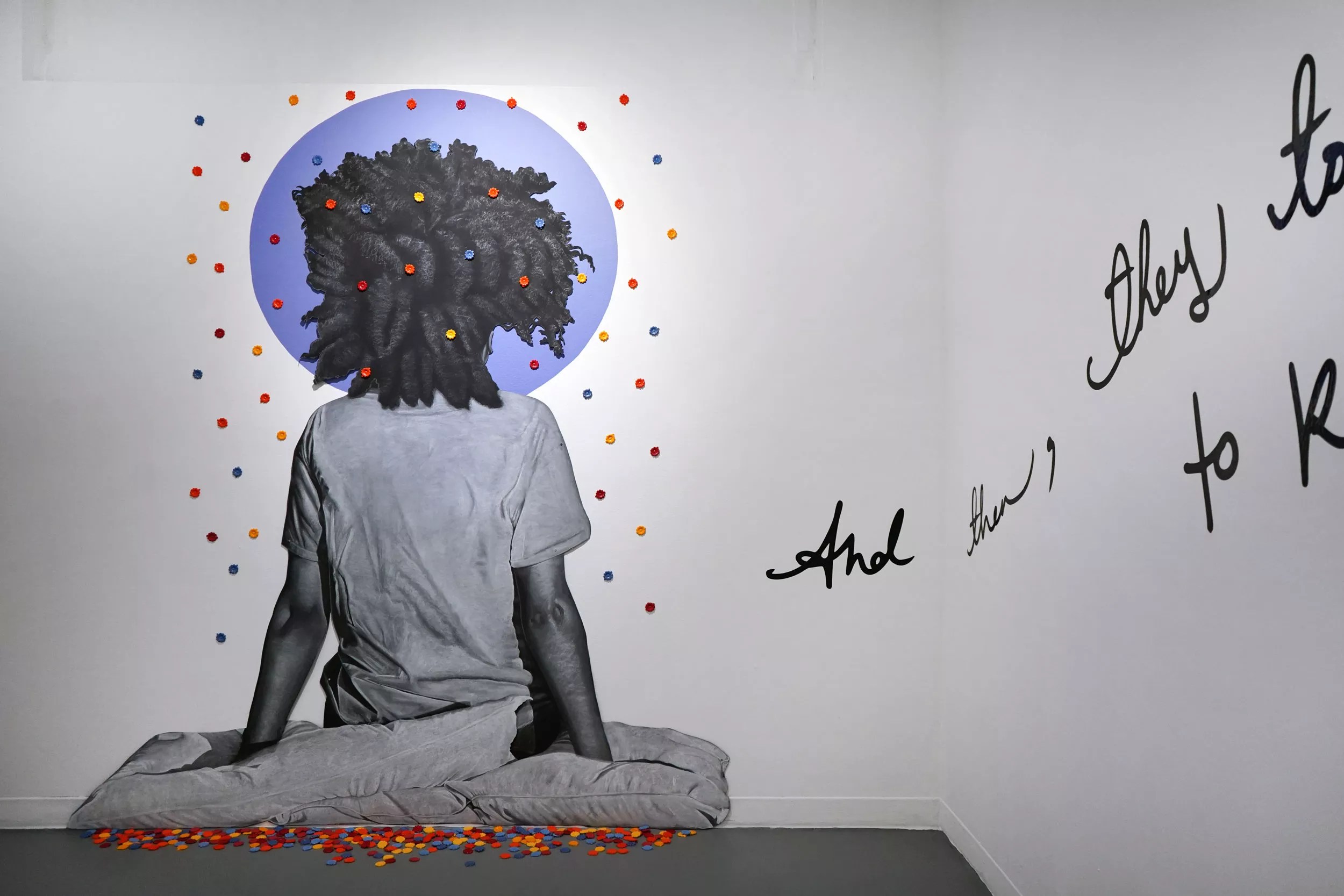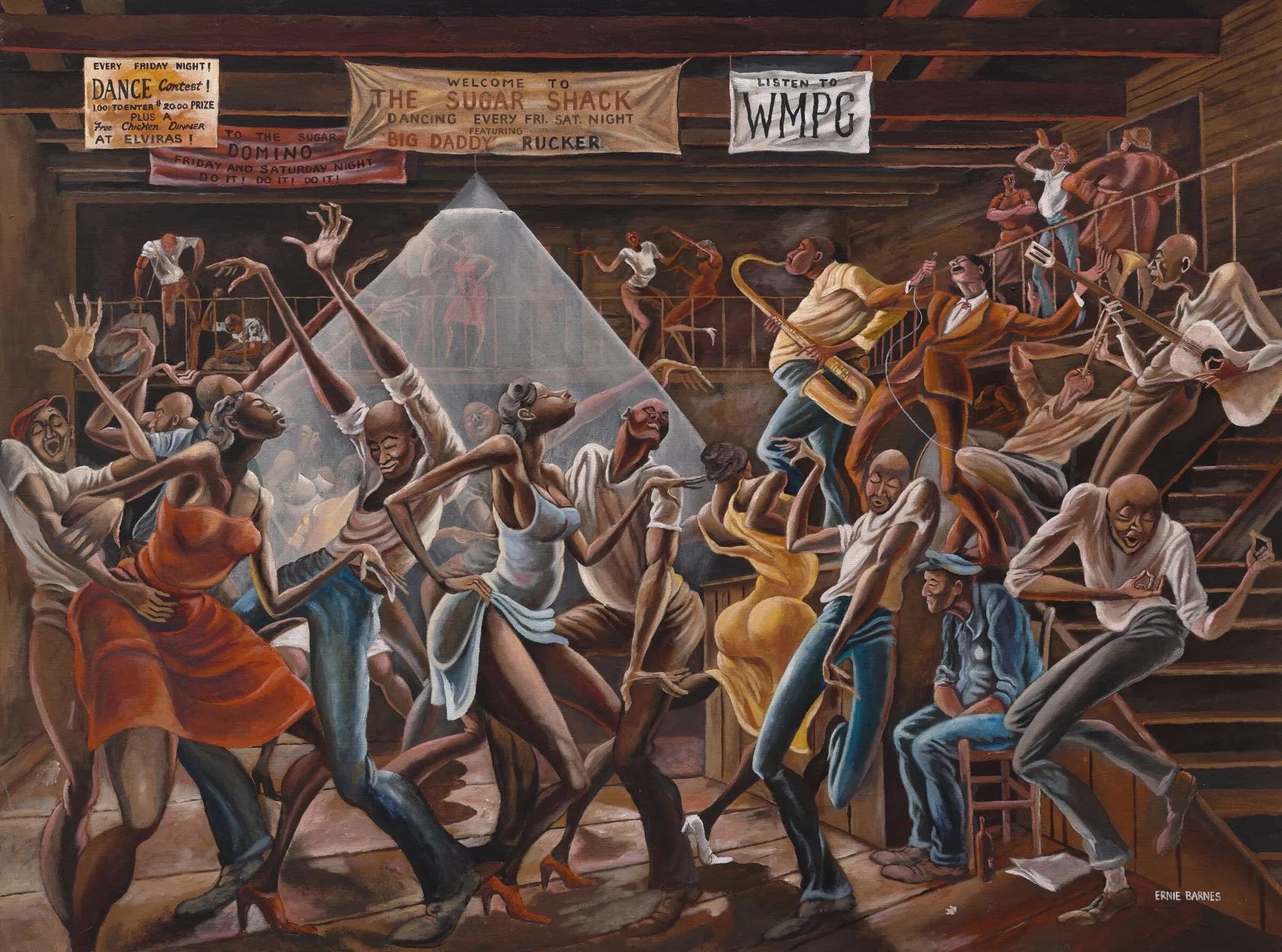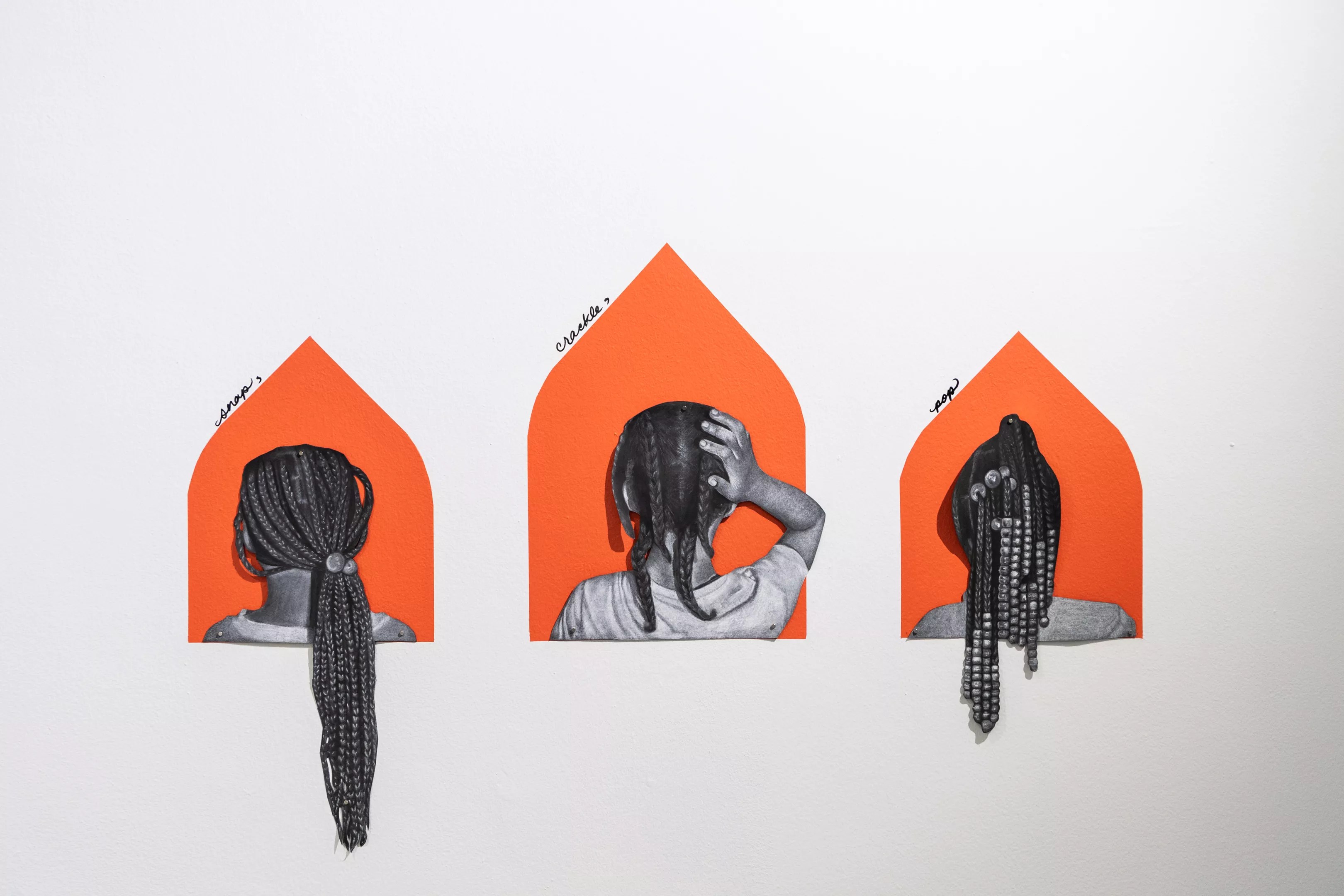
Photo by Isabella Marie Garcia

Audio By Carbonatix
The process of turning away from someone’s gaze is generally associated with rejection and denial. It’s a resistance to engaging with them and looking elsewhere, whether out or inward, without acknowledging their presence.
When viewing the sketched subjects of Miami artist Chris Friday, no eyes meet your gaze as you walk around “Good Times,” the artist’s solo exhibition on view through April 2 at Oolite Arts’ Lincoln Road gallery. The subjects in the intimate portraits of Black identity keep to themselves in acts of painful storytelling, joyful dancing, and domestic beautification – they’re being and living in their own world, indifferent to the viewer’s presence.
Assembled by Laura Novoa, an independent curator and arts administrator, “Good Times” pays reverential homage to the 1970s CBS sitcom of the same name through the artist’s intricately detailed chalk sketches on archival black paper.
In the exhibition’s brochure, Novoa recounts the show’s genesis through studio visits with Friday, meetings she describes as nonlinear conversational vignettes. A printed, chat-like dialogue between curator and artist includes moments like the moment when Friday marvels, “Are these bodies twerking or catching the Holy Ghost?” and Novoa responds, “Lmaooo. Maybe they’re one and the same!”

Ernie Barnes, The Sugar Shack, 1976, acrylic on canvas
Courtesy of the Museum of Fine Arts, Houston, Texas/© Ernie Barnes Family Trust
It’s clear that Novoa’s curatorial eye served to bolster and challenge the foundation of Friday’s practice.
Coupled with pops of color, ceramic, and text, “Good Times” gives its subjects the authority to disclose to the viewer whatever they wish. That stands in stark contrast to the nostalgic depiction of a Black family living in a Chicago housing project, which millions of Americans tuned in every week to watch.
Appearing in the credits of “Good Times” is the painting that ignited Friday’s drive toward an exhibition filled with Black joy and leisure: Ernie Barnes’ 1976 work, The Sugar Shack.
“I found inspiration in the work of Ernie Barnes. Particularly two paintings: The Sugar Shack and Friendly Friendship Baptist Church feature Black figures in expressive dancing motion,” Friday explains. “Absent of iconography like crosses or wine bottles that signified either the club or the church, I felt like the way the figures moved was so similar that the figures were almost interchangeable and able to exist in either environment or both simultaneously. Figuring out how to bring a similar ambiguity and celebratory energy into the exhibition without pointing too concretely at any one reason, era, or place, led to all of the environmental color choices, and the multidisciplinary approach to how the work was created and eventually displayed.”

Installation view of Lemon Pepper Steppers series
Photo by WorldRedEye/Alejandro Chavarria
Friday’s blueprint as a Southern Black artist comes across in the duality of laughing through the pain while sanctifying the sacredness of peaceful moments in Black life. In a tender video piece entitled Comfort Food, a vintage TV set is used to tell the story of Friday’s Mississippi-born grandmother and the difficulty that came with being raised in the Jim Crow South. While looking down and vocalizing the scars, Friday’s grandmother chuckles throughout the storytelling – an earnest admission that a sense of self-mockery is required to relive these hard-to-hear experiences.
Throughout the exhibition, inside jokes populate the top of the viewer’s direct line of sight, weaving handwritten cursive text. The ambiguous phrases are decoded to be messages only understood by the Black community: “And then, they told us to relax.” That phrase is juxtaposed with a haloed female figure, viewed from the back, her natural hair adorned with jewel-like barrettes that cascade down and pile onto the floor.
Novoa details the color choices as “placing the quotidian in a divine context, elevating the figure to a sacred position.” The phrases reflect the humor required to survive daily microaggressions in otherwise mundane moments.

Installation view of “Good Times”
Photo by WorldRedEye/Alejandro Chavarria
Much like the ironies embedded in the theme song of 1974’s Good Times – “Temporary layoffs/Good times/Easy credit rip-offs/Good times/Scratchin’ and survivin’/Good times/Hangin’ in and jivin’/ Good times” – the double meaning carries the weight of laughing through the pain. Whether it’s the perils of gun violence or the daily inability to avoid unsolicited beauty advice, Friday wants the viewer to understand the varied manifestations of “good times” for Blackness as a collective culture, a sole individual, and by extension, one’s own personal understanding of the “not-so-good times” of life, and humor as a coping mechanism.
When asked about how she “turns away” toward realms of privacy to practice her own form of resting, Friday says, “Funny enough, there is still the small thought in the back of my mind that my works will also be read as stereotypical depictions of Black bodies – laziness instead of leisure. But I think there is something so ironic about the hundreds of hours it can take to bring into existence a Black body at rest; something poetic in the way I work to manifest, through art, what I fail to achieve for my own body in waking life. My work reflects a desire to rest, and the same desire gets me through the work.”
Chris Friday: “Good Times.” On view through April 2, at Oolite Arts, 924 Lincoln Rd., Miami Beach; 305-674-8278; oolitearts.org. Monday through Sunday noon to 5 p.m.